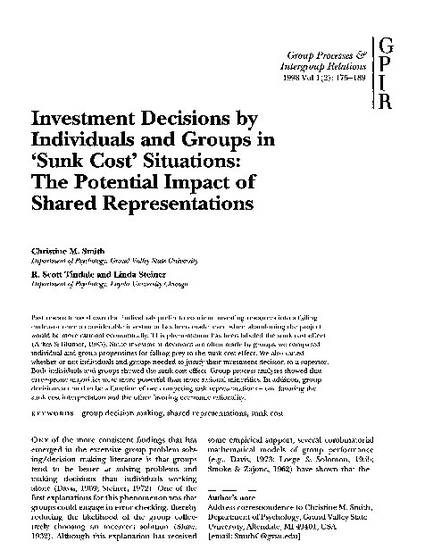
- group decision making,
- shared representations,
- sunk cost
Past research has shown that individuals prefer to continue investing resources into a failing endeavor once a considerable investment has been made, even when abandoning the project would be more rational economically. This phenomenon has been labeled the sunk cost effect (Arkes & Blumer, 1985). Since investment decisions are often made by groups, we compared individual and group propensities for falling prey to the sunk cost effect. we also varied whether or not individuals and groups needed to justify their investment decision to a superior. Both individuals and groups showed the sunk cost effect. Group process analyses showed that error-prone majorities were more powerful than more rational minorities. In addition, group decisions seemed to be a function of two competing task representations--one favoring the sunk cost interpretation and the other favoring economic rationality.
Available at: http://works.bepress.com/r-tindale/2/

Original Citation: Smith, Christine M., R. Scott Tindale, and Linda Steiner. "Investment Decisions by Individuals and Groups in 'Sunk Cost' Situations: The Potential Impact of Shared Representations." Group Processes & Intergroup Relations 1, no. 2 (1998): 175-189.